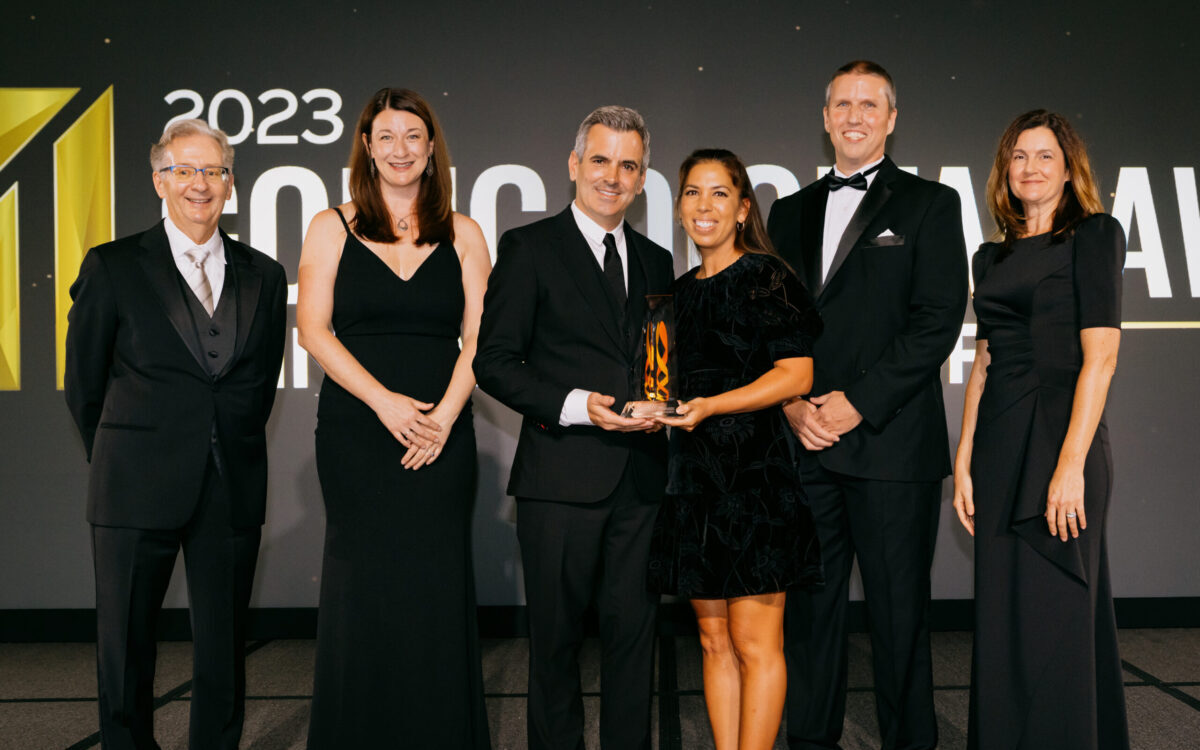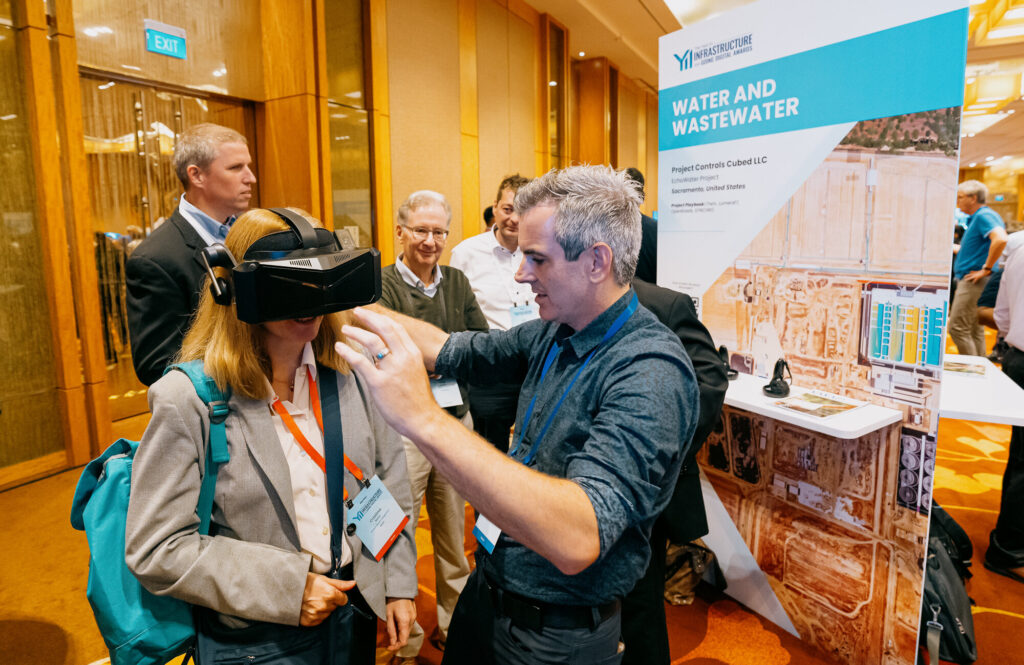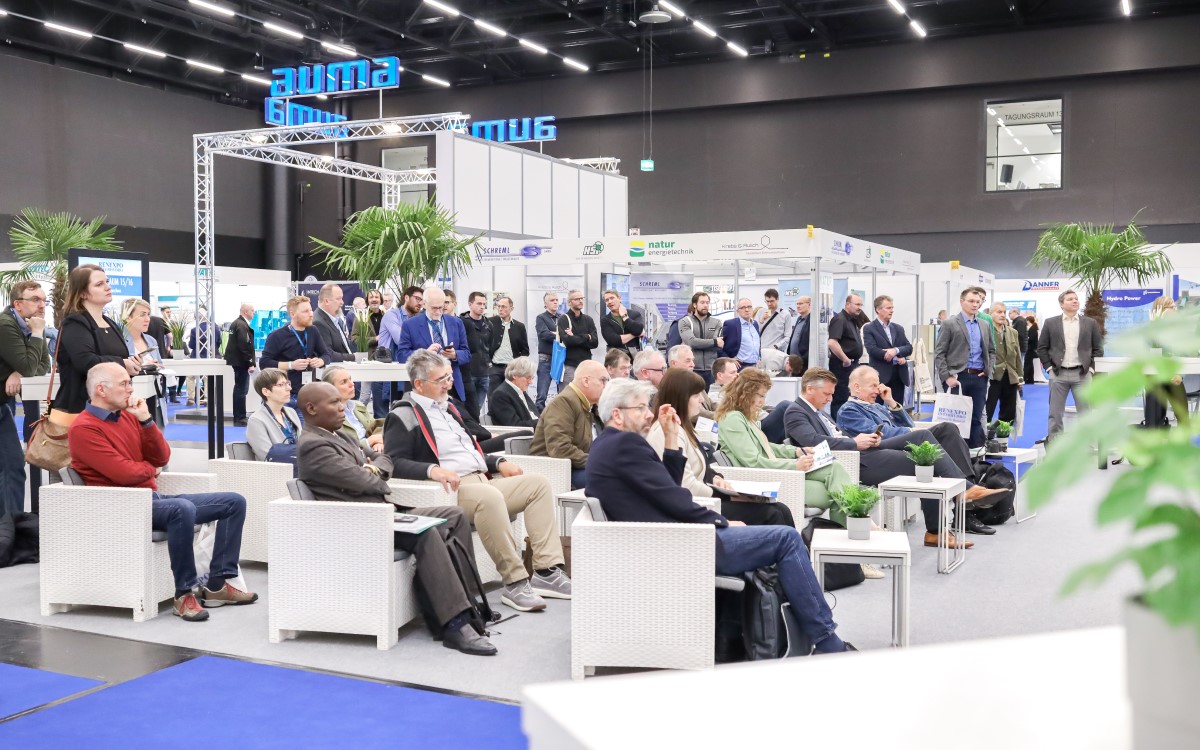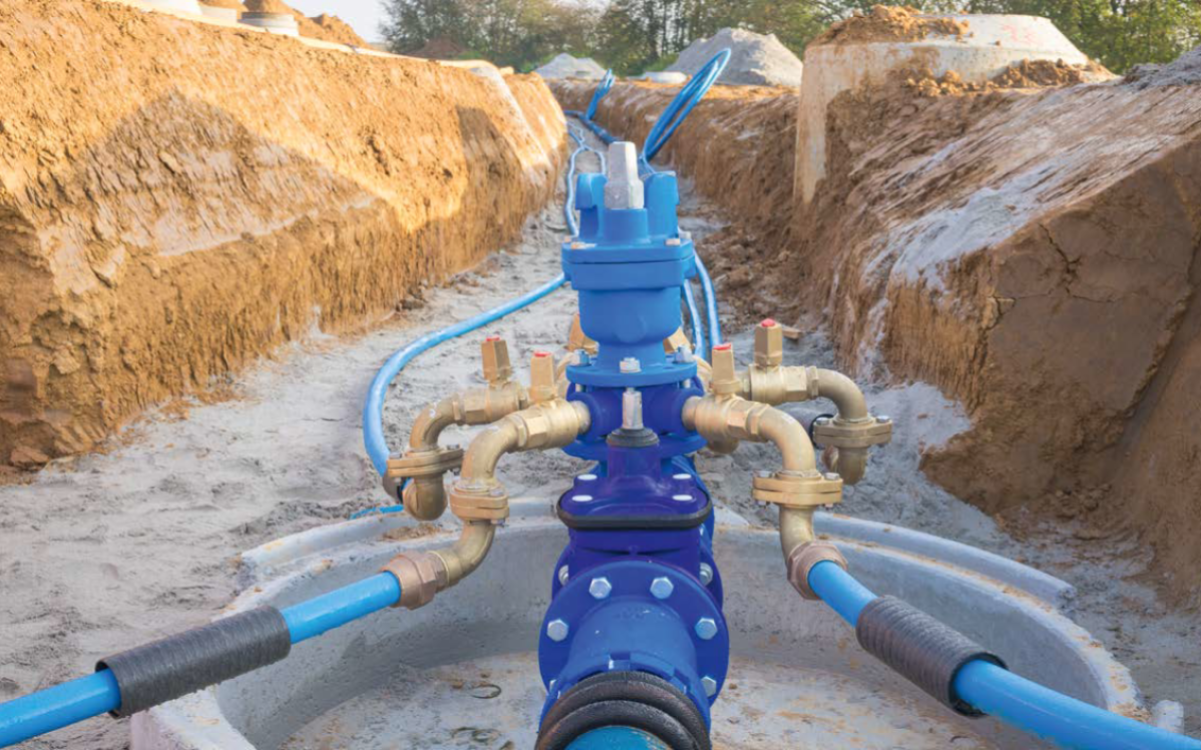14. November 2023 ǀ The “Year in Infrastructure 2023” took place in Singapore in mid-October. Bentley Systems presented the Going Digital Awards in twelve categories.
Based on user projects, CEO Greg Bentley showed how infrastructure companies are overcoming the capacity gap in technical resources by using digital solutions. According to a survey of the finalists of the Going Digital Awards, the saving in engineering hours made possible by the solutions used is 18 %. Chris Bradshaw, Chief Marketing Officer of Bentley Systems, emphasised:
“These projects reflect how companies have improved their work processes by using digital technologies to achieve maximum efficiency and cost savings.”
The finalist projects
And so, 36 finalists in twelve categories presented their projects to the global trade press and twelve independent juries. Over 300 projects from more than 235 companies from 51 countries were submitted. Awards were presented in the following categories:
-
-
- Bridges and Tunnels,
- Civil Engineering,
- Enterprise Engineering,
- Facilities,
- Real Estate,
- Campuses and Cities,
- Process Manufacturing and Power Generation,
- Rail and Transport,
- Roads and Motorways,
- Building Construction and Structural Engineering,
- Surveying and Distribution,
- Water and Wastewater
-
Project EchoWater
In the Water and Wastewater category, Project Controls Cubed LLC was honoured with the Going Digital Award for its EchoWater project from Sacramento, USA. 22 individual projects brought together in a digital twin: in the EchoWater project, one of the largest public construction projects in Sacramento was supported for over ten years. The aim of the construction project was to ensure a safe and reliable supply of treated water. More specifically, the 511 million litre per day wastewater treatment plant was to be upgraded with the aim of removing 99 % of ammonia and 89 % of all nitrogen, as well as supplying water for reuse as industrial water.
The design and implementation of the 22 individual projects presented a major challenge because all the new components had to be installed in an active wastewater treatment plant. To predict difficulties and potential construction failures, the team decided to use Synchro and iTwin. The digital twin made it possible not only to recognise potential challenges at an early stage, but also to keep an eye on costs and deadlines. Thanks to the work of the networked digital visual environment, EchoWater was completed at a total cost that was USD 400 million below the previously calculated budget of USD 2.1 billion. The saved project costs will be used to finance the Californian Harvest Water programme, which provides recycled water for agriculture in the Central Valley.
Further finalists
Constant drinking water supply system for emerging economies
The reliable provision and supply of safe drinking water is a challenge in many places in India. The Ayodhya Authority commissioned Geoinfo Services to plan and design an urban pressurised water supply system. The new pressurised water network will give the population of Ayodhya access to clean water 24 hours a day. At the same time, water losses will be reduced by 35 %. To achieve this, hundreds of network pipes and nodes had to be modelled.
Geoinfo chose OpenFlows to create a hydraulic model and digital twin of the city’s 24-hour supply system, using variable frequency control pumps to generate the required pressure at the nodes. Thanks to the technology used, the design time was reduced by 75 % and the diameter of the pipes was optimised, resulting in savings of USD 2.5 million. The optimised network will save USD 1.5 million annually in operating costs and USD 46,025 in energy costs, while avoiding 347 tonnes of carbon emissions per year. The digital twin enables virtual monitoring with 95 % reliability and helps improve decision-making and mitigate emergency situations.
Water supply plan for the rural area of Rajghat with several villages
Rajghat is a rural area in India with several villages that are not adequately connected to a reliable supply network. The new supply system will provide the rural population with water and electricity via a 7,890 km long pipeline system with 698 elevated tanks and auxiliary pumps. Once completed, the water network will provide 2.5 million people with access to clean drinking water.
The different soil conditions and terrain proved to be a challenge for the hydraulic and structural design. The software applications initially used proved to be time-consuming and inefficient in terms of meeting the project schedule. By utilising OpenFlows, Plaxis and Staad, the project team was able to complete the technical design within four months. Working in an open digital environment saved 50 % of the modelling time and increased productivity by 32 times. The construction time was reduced by 10 %. The 3D models and data are linked to monitoring devices for digital operation and maintenance.
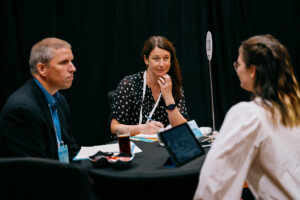
In interviews, the experts from Bentley Systems took a closer look at what the future could look like in the water sector with infrastructure solutions (Gregg Herrin (left), Neda Simeonova (right)).
Groundbreaking digital solutions
The nominees of the Going Digital Awards demonstrated what is possible with digital solutions. 3D models and digital twins allow a better understanding of process flows, point out potential problem areas so that measures can be taken in good time and save time and costs. In this way, digital solutions help to supply people around the world with clean drinking water, build more efficiently and sustainably and save valuable time in the process.
Learn More about the Going Digital Awards